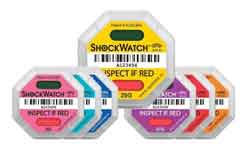Now some 17 years after the infamous Walmart RFID mandate was announced in 2003, and more than a decade since the program completely collapsed in 2008, sending RFID in the consumer goods to retail sector back by many years, there does seem to be a bit of momentum
Macy's and Target stores have been rolling out RFID, largely to support ecommerce fulfillment, and a few weeks ago, stock market analyst Charles Anderson of financial firm Dougherty & Company issued a buy rating on leading RFID tag and reader maker Impinj, citing its own research that Walmart itself was going to jump back in and launch an item-level tagging program for apparel goods later in 2020.
Supply Chain Digest Says... |
 |
| Most RFID deployments fall under scenario 1. A few could be categorized as being in scenario 2. Most scenario 3 applications are still on the drawing boards |
 |
What do you say? |
| Click here to send us your comments |
 |
| Click here to see reader feedback |
|
|
The driver for Walmart as well was said to be ecommerce, with item-level RFID needed to ensure high levels of inventory accuracy, so that retailers can promise on-line that an item is in stock with confidence.
How that RFID market momementum will fare in the face of the coronavirus crisis and almost certain economic turmoil remains to be seen.
But if the momentum does continue, consumer goods companies will likely find they are tagging items and perhaps cases and pallets - perhaps for their own use as well as for their retail customers.
To help companies think about potential RFID opportunities, a number of years ago SCDigest noted that it may be helpful to think of the potential use of RFID in the context of the predominant supply chain auto ID technology, bar codes.
From that perspective, any potential use of RFID may be thought of as occupying one of three categories relative to the current or alternative selection of bar coding for the process/application.
1. Basic Bar Code Replacement: In these scenarios, RFID will operate really just like an "electronic bar code." Individual bar code scans are simply replaced with an RFID read. There are many examples where this type of application makes perfect sense and can deliver significant benefits. Example applications include pallet identification (e.g., in receiving or shipping), reading cartons on a conveyor system, pallet putway, reading work-in-process totes, etc.
The advantage of RFID over bar codes in these scenarios usually relate to improved efficiency from eliminating hand scans by operators, or eliminating problems with bar code read rates, as is often found in high speed carton sortation systems.
The "basic bar code replacement" applications are the easiest to implement because the fundamental business process is the same, and the underlying business software application can often remain exactly, not caring (or knowing) whether the source of the identifier was a bar code or RFID tag.
2. Enhanced Business Process: In these cases, the basic business process remains the same, but the unique advantages of RFID begin to be more leveraged. For example, RFID might be used to simultaneously read all of the cartons on a pallet as it passes through a portal, or read all of the serial numbers virtually at once as a pallet of goods leaves a production cell.
In these scenarios, the fundamental process remains the same, but is enhanced to drive even greater productivity. A pallet of bar coded goods cannot be read all at once, and if bar codes on some cartons are not accessible, could not even be read manually after the pallet is built.
(See More Below)
|
CATEGORY SPONSOR: SOFTEON |
|
|
| |
|
|
These types of scenarios usually do require some changes to the underlying software, which is unlikely to be developed to handle these types of simultaneous inputs, and to react to errors or misreads.
 3. Designing of New Business Processes: In these applications, which are mostly still being envisioned, the underlying business process is fundamentally altered. One good example might be a RFID network in a distribution center that continually monitors all inventory in near real-time. 3. Designing of New Business Processes: In these applications, which are mostly still being envisioned, the underlying business process is fundamentally altered. One good example might be a RFID network in a distribution center that continually monitors all inventory in near real-time.
In that scenario, traditional beliefs and processes around traditional physical inventories and cycle counting are completely turned on their heads. That means significant work in designing "as is" and "to be" processes, getting substantially more input and buy-in from multiple parties than the first two scenarios, likely significant changes to underlying software or even adoption of new applications, substantial piloting and testing, etc.
Today, most RFID deployments fall under scenario 1. A few could be categorized as being in scenario 2. Most scenario 3 applications are still on the drawing boards.
But categorizing potential RFID-based applications as falling into which scenario can help companies understand the likely impact on potential return (lowest to highest) and system software work (also lowest to highest.
What do you think of our three-level RFID deployment model? What would you add or change? What type of applications would you put as being in category 2 or 3? Let us know your thoughts at the Feedback section below.
Your Comments/Feedback
|

